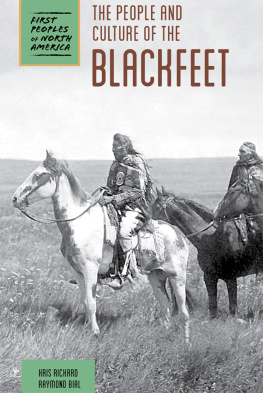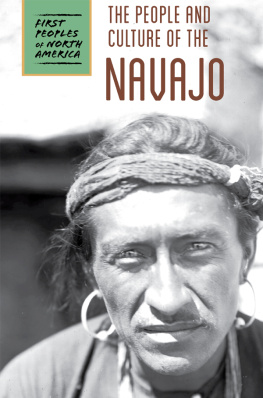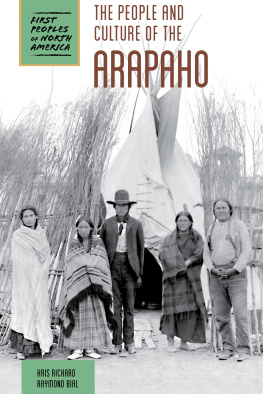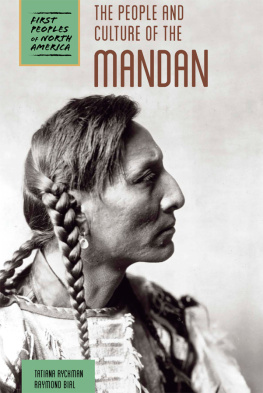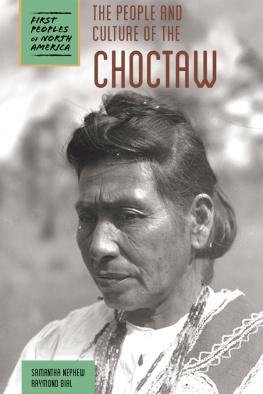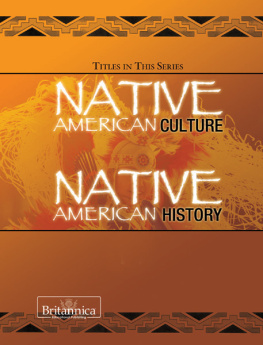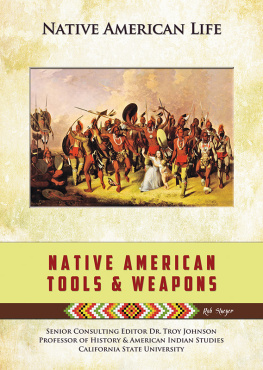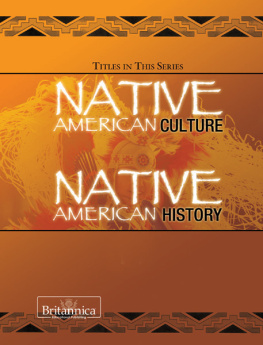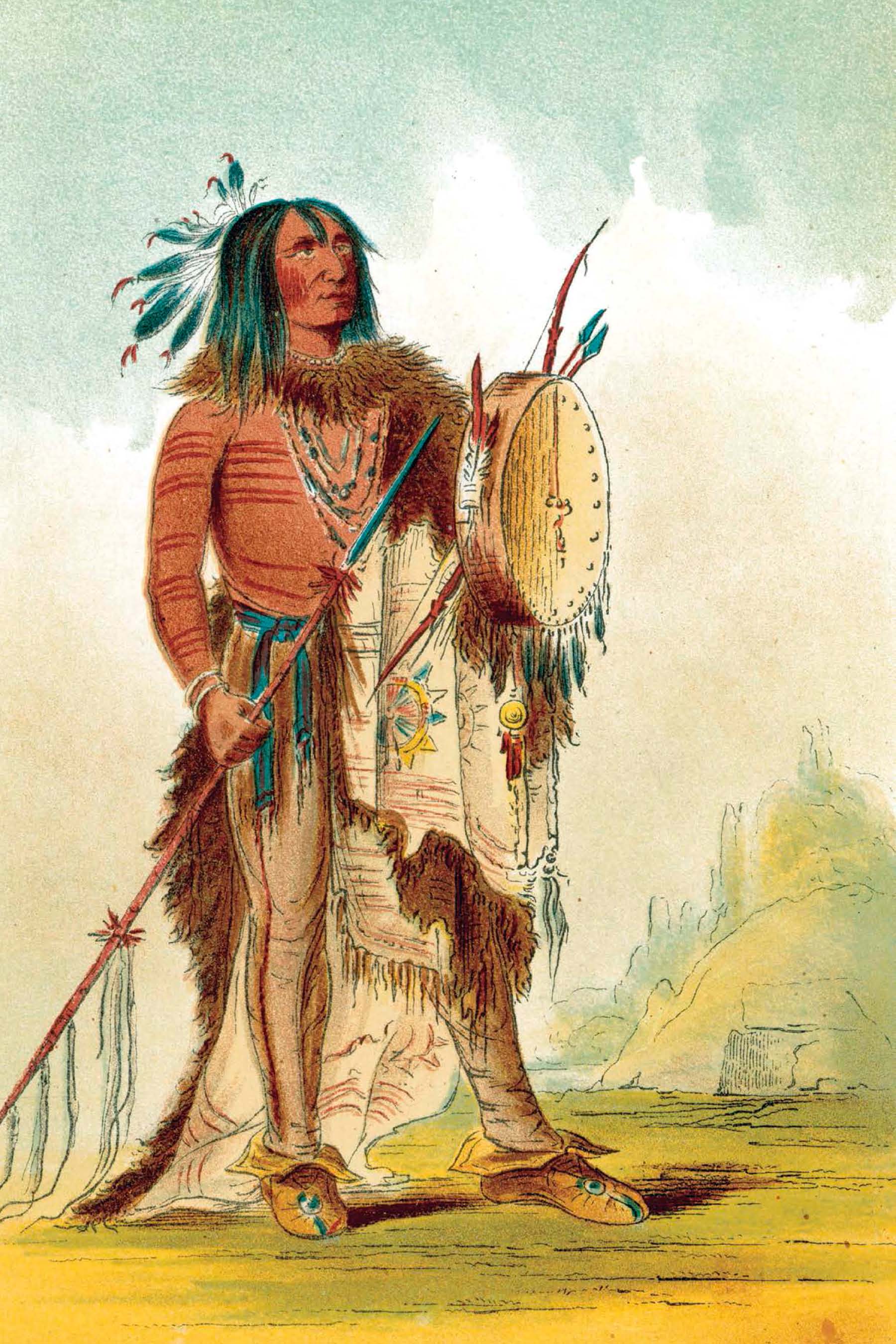
This drawing is of a Blackfeet medicine man, circa 1830.
CHAPTER FOUR
In the years since I began following the ways of my grandmothers, I have come to value the teachings, stories, and daily examples of living which they shared with me.
Beverly Hungry Wolf
BELIEFS OF THE BLACKFEET
T he symbol of strength in any belief is longevity. Faith should be something that is unwavering and provides a sense of continuing spiritual growth. The fact that many of the Blackfeet ceremonies and traditions are still practiced today shows how intrinsic they are to daily life for the Blackfeet. Again, their incorporation of both male and female in these rituals displays the tribes sense of true equality. There are few Western religions today that have that in their organization.
The Supernatural and Healing
Like other Native Americans, the Blackfeet believed in many supernatural beings, both good and evil. These spirits included the sun and the thunder and many animals. People believed that the land and all living creatures were blended spiritually with their everyday lives. They prayed throughout the day. Sweating served as a form of worship and a preparation for ceremonies. When the men gathered in the sweat lodge, they often smudged or smoked medicine bundles.
Young men went to remote places for solitary vision quests. In a vision quest, they sought guardian spirits who would guide them in their daily activities and in important endeavors, such as going to war or hunting buffalo. Guardian spiritsoften in the form of animalsbrought good fortune and taught important skills. In the vision, the spirits revealed songs, rituals, and powerful objects known as talismans. The youth gathered these talismans and placed them in a medicine bundle. During social and religious ceremonies, he drew upon the power of the medicine bundle, as well as the songs and rituals. Men who had received a vision that might benefit the entire tribe became holy men. It was believed that their medicine bundles were especially strong. Individuals, societies, and bands all owned medicine bundles, which included sacred pipes. The most powerful medicine bundle was the beaver medicine bundle, used to charm the buffalo by a group known as the Beaver Men. This bundle also aided in planting sacred tobacco, which was used in rituals, notably the medicine pipe ceremony. Medicine bundles ensured a long and prosperous life. Considered quite valuable, the medicine bundles were traded among tribal members in elaborate ceremonies.
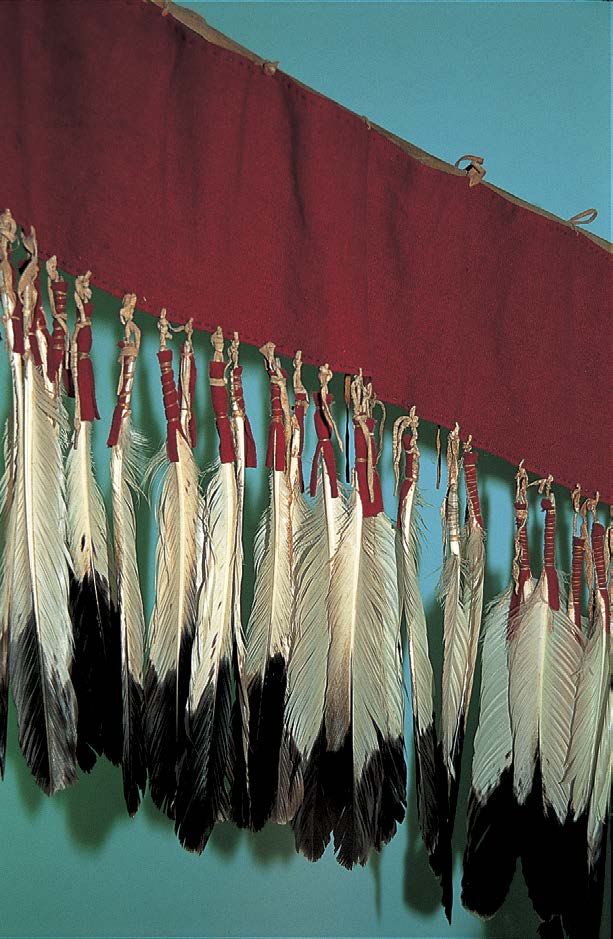
Feathers were important to the Blackfeet.
Shamans, or medicine men, were responsible for curing illnesses and healing injuries. There were a number of medicine women among the Blackfeet who, like the men, had acquired their ability to heal the sick through a vision. The Blackfeet believed that illnesses were caused by the presence of an evil spirit in the body. The shaman undertook rituals in which the good spirits were asked to drive away the evil spirits. They often removed an object from the sick person as proof that the ritual had worked. Shamans also treated injuries, such as cuts, with medicinal herbs. They learned about these medicines by serving an apprenticeship with an experienced healer. Horses were usually offered as payment for the services of a shaman.
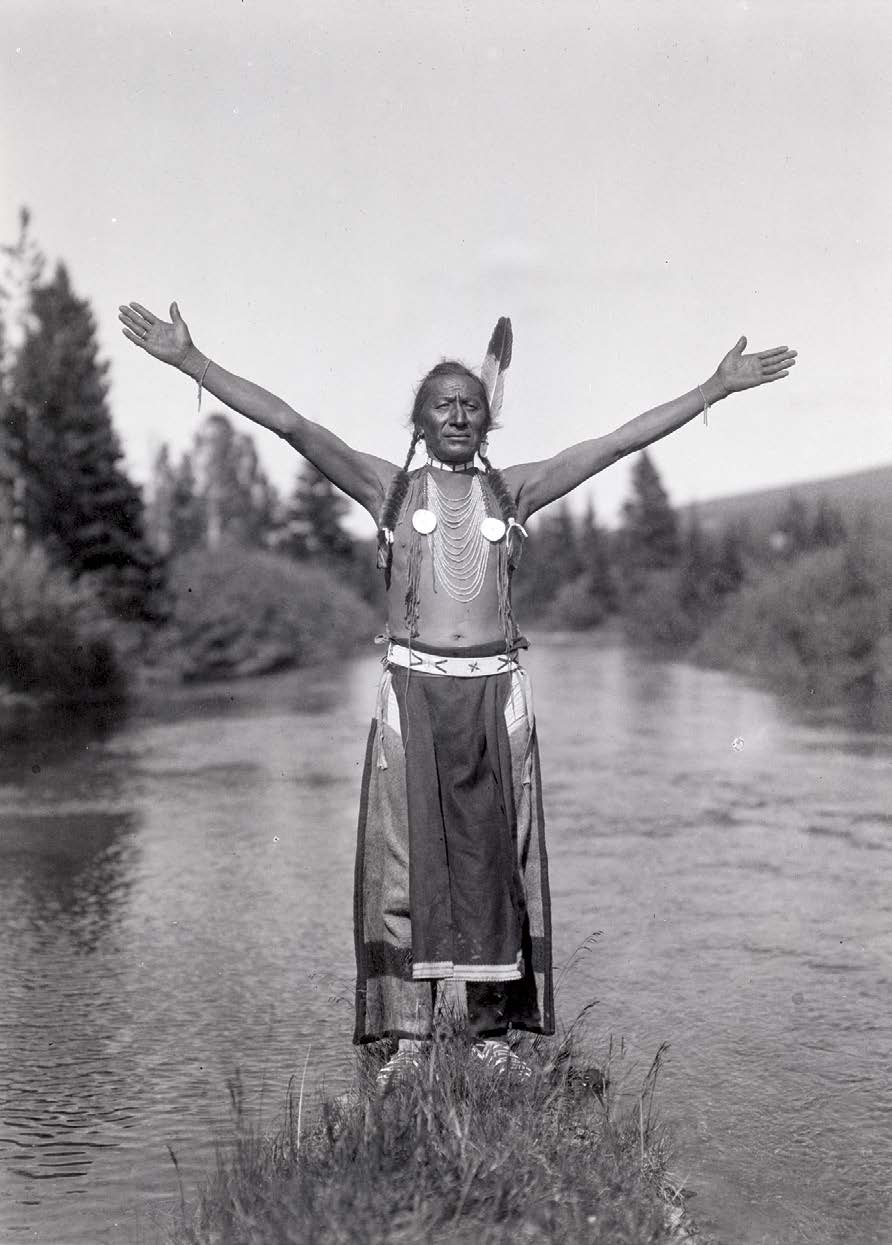
Here, a Blackfeet man named Big Springs prays to the sun.
Rituals and Celebrations
The most important ceremony was the Sun Dance, held in midsummer in a special lodge. The Sun Dance was most likely adopted from the Arapaho or the Gros Ventre in the mid-eighteenth century. Unlike the other tribes on the Great Plains, Blackfeet women also took part in the Sun Dance. In particular, the medicine woman was a key figure whose virtue and preparations influenced the success of the sacred event.
The Sun Dance lodge was built of cottonwood around a tall center pole, and the dance began. Over the course of four days, the dancers, who had taken sacred vows, fasted and drank no water. Through reverent songs, they called upon the sun to bring them strength and good fortune. Some dancers pierced the muscles of their chests with sticks attached with rawhide thongs to the center pole. The dancers then pulled away from the pole until the sticks were torn loose. Other men and women cut off fingers or dug chunks of flesh from the arms and legs. Although the United States and Canadian governments outlawed the Sun Dance in the late nineteenth century, it never vanished, and many Blackfeet continue to take part in this sacred event.
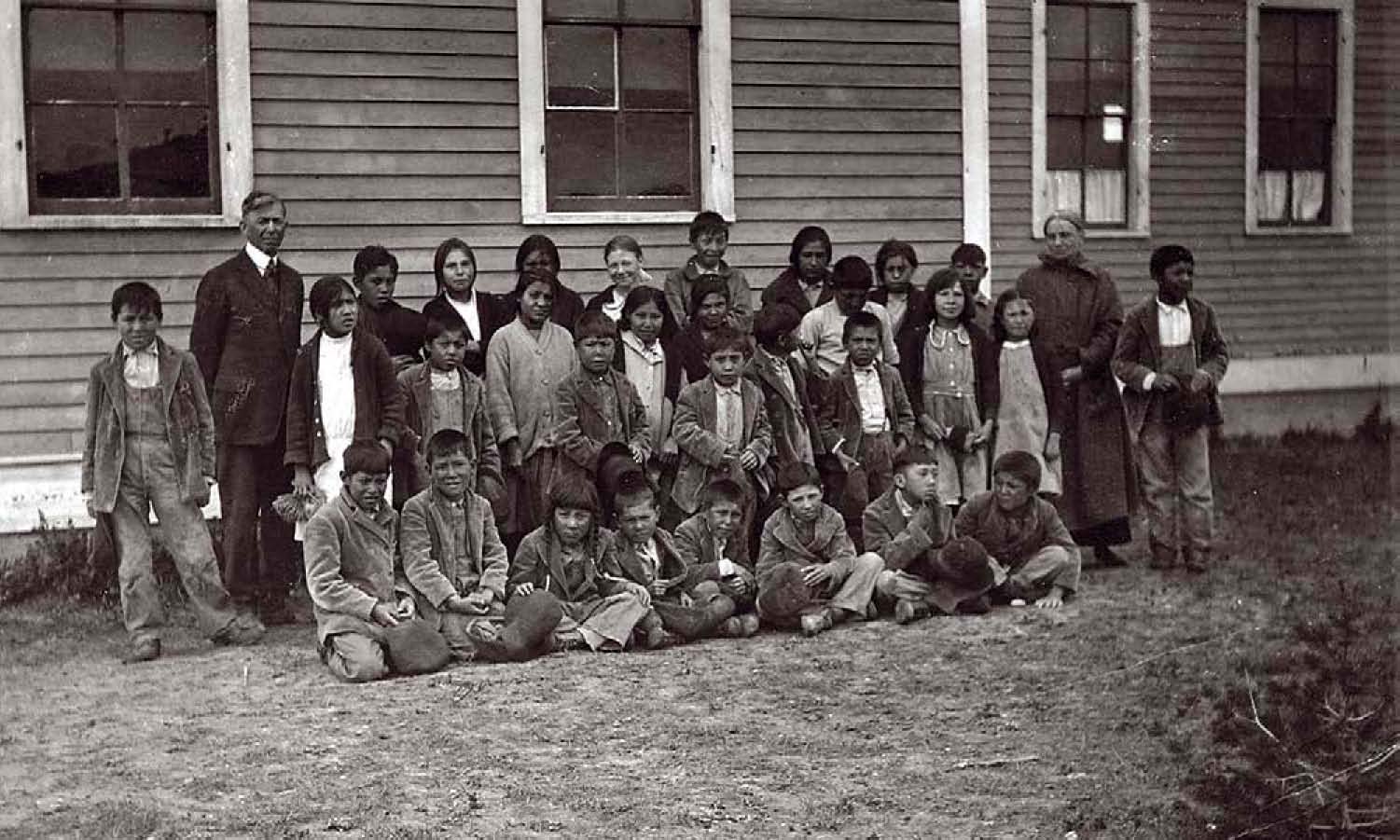
In 1872, Heart Butte Day School became the first public day school for Blackfeet children.
In the early 1800s, missionaries arrived in Montana, but the Blackfeet resisted the missionaries efforts to convert them to Christianity. In the late 1800s, mission schools were opened for the tribe. Gradually, traditional beliefs were undermined, and many people converted. Although the Blackfeet continue to belong to secret societies and practice the Sun Dance, many are also Christians.
Fun and Games
The Blackfeet enjoyed a wide variety of sports, games, and amusing pastimes. They often kidded each other and told humorous stories. In campfire yarns, the creator Napi became a trickster who took advantage of just about everyonethough in the most amusing stories his tricks backfired, and he became the dupe.
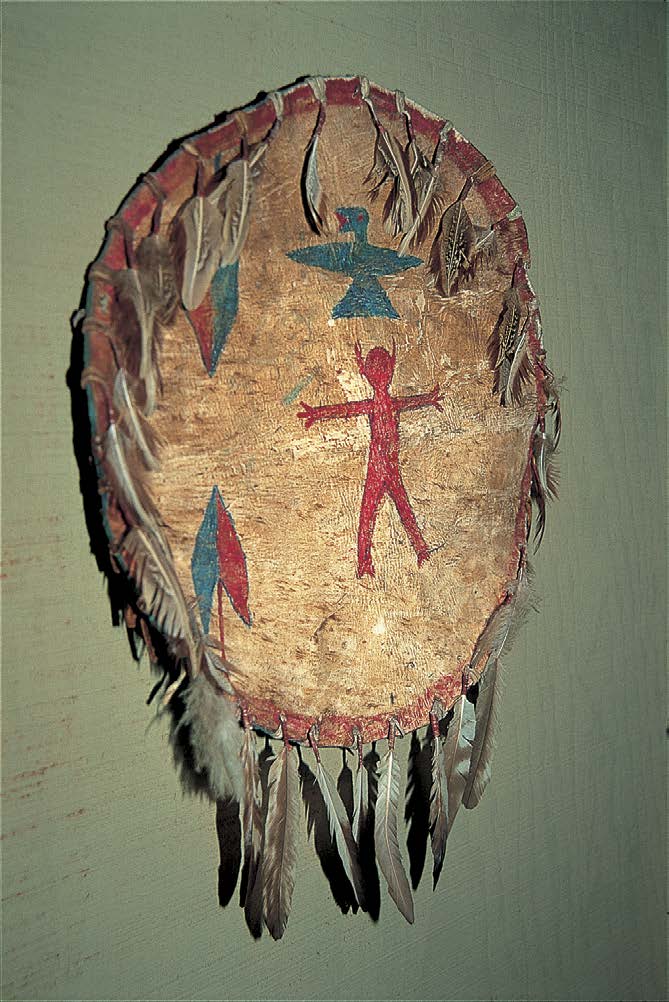
The Blackfeet created paintings on many objects, including shields.
Children played with toys. In the winter, boys spun tops on packed snow or river ice. Lashing together a log and tree limbs and attaching horsehair for mane and tail, men cleverly fashioned hobbyhorses on which young children practiced their riding skills. Children also enjoyed hide-and-seek, swimming in the summer, and sledding in the winter. Much of their play imitated adult activities, and they often played house. Boys snared gophers and dried their skins, which girls then sewed into miniature tipi covers. With sticks and skins, girls also made tiny travois and parfleches. Girls played with dolls made by their mothers and grandmothers, and practiced housekeeping, handicrafts, and moving camp.
Girls sometimes played a game similar to crack-thewhip. Seven or eight girls formed a line, each holding onto the waist of the girl in front of her. Singing skunk with no hair on the backbone, the leader walked, then began to run, trying to swing the line so that she could touch the last girl. If the girl was tagged, she became the leader and the girl in front became the last in line. The boys enjoyed vigorous contests, such as wrestling, archery, and spear throwing. These activities toughened their bodies and enhanced the skills that would be useful in hunting and warfare. To mimic a buffalo hunt, one boy dragged a chunk of meat on a rawhide rope while the other boys took aim with bows and arrows. Sometimes, he stopped and swung the meat over his head as the boys shot at it. Boys also hunted small gamerabbits in winter and gophers in early summer. They took baby hawks from their nests and raised them in cages made of woven willow branches. By the following spring, they had hawk feathers for fletching their arrows. Boys also competed in the clay war game. In this game, two teams went to the riverbank and cut willow branches. Using the springy willow branches, they shot balls of wet clay at each other.

